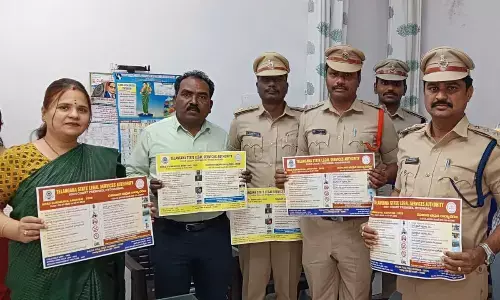Honour the honest: Structural reforms of Income Tax

Prime Minister of India Narendra Modi
August 13 is a great milestone in the history of 160 years of Indian Income Tax (Income Tax was introduced by James Wilson who was the first Finance Minister of India during British Rule)
August 13 is a great milestone in the history of 160 years of Indian Income Tax (Income Tax was introduced by James Wilson who was the first Finance Minister of India during British Rule). This is the day on which the Prime Minister of India Narendra Modi unveiled a gigantic tax reform with a single stroke. Hereafter all I-T Returns will be scrutinised ( means thoroughly examined /verified) on electronic basis only. This is only known as e-Assessment.
Hitherto the Assessee/ Tax payer knew who was his Assessing Officer and vice-versa. Thence there is no chance of knowing each other as it was mentioned by the PM .Now the assessments are done away with geographical jurisdiction. For instance the Return of the assessee filed in Mumbai will go to an Officer placed at Tezpur or a Return of Income filed in Jammu will be scrutinised by an Officer in Madurai. Not only that they will never face each other physically during the entire assessment process,there are many layers in between . Hence it is known as faceless assessment also.
In fact, this faceless assessment had been started on Vijaya Dasami (Dasara/Dasserah) of 2019 on a sample base. Out of all Returns filed for the Assessment Year 2018-19, 58000 odd cases were selected, assigned and were being assessed by newly set up Regional e-Assessment Centres (ReACs) in eight cities throughout the country. These eight ReACs are located in Delhi, Mumbai, Pune, Bangalore , Chennai ,Hyderabad , Ahmedabad and Kolkata. To co-ordinate, control, supervise and monitor these Regional Centres an apex body was set up at Delhi known as National e-Assessment Centre (NeAC ).
Initially the Draft Assessment Order will be prepared by the Assessment Units of ReACs. In order to help the Assessing Officer (AO) and to keep the system foolproof many units were set up between the AO and the NeAC. They are Verification Unit, Risk Unit, Review Unit and Technical Unit.
The Verification Unit does verification of books of Accounts, cross verification examination of witnesses, verification , enquiry and recording statements. Technical Units provides technical assistance including Legal, accounting, forensic , valuation , information Technology, Transfer Pricing , Data Analytics, management or any other technical matter.
The Risk Unit reviews the draft prepared by the AO from any high pitch assessment issue. Finally the Review Unit reviews the draft order whether all facts and law were inserted in the draft or not? Whether all evidences available brought onto the record or not ?! Again after all this exercise the Range has to approve it before the draft assessment order is sent to NeAC for final approval and sending the Order to the NeAC.
The Range Head, normally an Additional Commissioner or Joint Commissioner rank officer equipped with good seniority and well versed with the I-T Act, will add any missing points to the Order after thorough review and discussion with the Officer concerned. The final Order to be passed by the NeAC will be after examining the Draft sent by the AO from all angles comprehensively .
In this way , now in faceless / e-Assessments there are many Officers involved to pass a single Assessment Order. This new procedure is completely contrary to the age old practice wherein all the authorities have been concentrated in the hands of one single Assessing Officer (AO). That was the reason behind the appreciation of the PM while saying even' I congratulate ITOs for sacrificing their authorities for the sake of transparent Assessments'.
The entire scrutiny procedure has now has become very transparent and above any suspicion as many officers are involved at different levels placed at different places. As the PM says this random selection , e- assessments and reviews give rise to the seamless, faceless and painless assessments. The I-T department has already started DIN ( Document Identification Number ) while issuing any letter to any taxpayer or for any kind of interaction this was to facilitate traceability and identification.
Some other noteworthy reforms already started and being implemented by I-T were : Reduction of Corporate Tax from 30 per cent to 22 per cent, Reduction tax on newly set up manufacturing Units/Plants to 15 per cent (to encourage Made in India ) and abolition of Dividend Distribution Tax (DDT) ( to encourage the investors to invest in Stock Markets)
In order to reduce perennia/incessant/ unending tax disputes the Union Govt under the leadership of the PM increased the limits of litigation to Rs one crore and Rs two crore at High Courts and Supreme Courts respectively. Below these levels the department will not challenge the cases in the higher courts of law. The litigation levels of disputes increased even before the Commissioners of Appeal also. As a result thousands of decade-old cases were resolved throughout the Country.
All these reforms will lead to policy driven governance with clarity in policy,power- centric administration to people centric and public friendly administration. The faceless assessment is completely in electronic mode , with no human interface creating an environment of Transparency, efficiency, integrity, sensitivity and functional specialisation. It will also produce improvement in quality of assessment, standardisation & quality management and better monitoring by higher authorities.
The penultimate important point of significance is that it is moral based, holistic and linked reform. Such ease reforms will encourage more people to come forward voluntarily to file the returns and to to pay the Taxes on their own . As emphasised by the PM the taxpayers are only 1.5 per cent , this is really negligible when compared to the modernity and living standards seeing around us particularly in the last one decade. There is a hope of increasing the percentage of taxpayers in the Country once the implementation of these Tax reforms start , automatically. It will create an Atma Nirbhar Bharat. The reformer Narendra Modi will find a place in the hearts of honest tax payers forever.
(The author is Joint Commissioner of Income Tax, Pune.)















